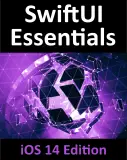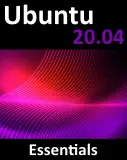New eBooks


Recent Posts
- An Android Content Provider Client TutorialIn this final chapter devoted to Content Providers, we will build an app that accesses the data contained in our SQLDemo content provider and displays the list of customer contacts. Creating the SQLDemoClient Project Start Android Studio, select the New Project option from the welcome screen, and choose the Empty Views Activity template within the… Read more: An Android Content Provider Client Tutorial
- An Android Content Provider TutorialAs outlined in the previous chapter, content providers provide a mechanism through which the data stored by one Android application can be made accessible to other applications. Having provided a theoretical overview of content providers, this chapter will continue the coverage of content providers by extending the SQLDemo project created in the chapter entitled An… Read more: An Android Content Provider Tutorial
- Understanding Android Content ProvidersThe previous chapter worked on creating an example application designed to store data using a SQLite database. When implemented this way, the data is private to the application and, as such, inaccessible to other applications running on the same device. While this may be the desired behavior for many application types, situations will inevitably arise… Read more: Understanding Android Content Providers
- An Android SQLite Database TutorialThe chapter entitled SQLite Databases in Android Studio covered the basic principles of integrating relational database storage into Android applications using the SQLite database management system. In this chapter, we will create a project using SQLite databases to store and retrieve data. About the Database Example The example project is a simple data entry… Read more: An Android SQLite Database Tutorial
- Android Studio Version CatalogsA newly created Android Studio project will consist of approximately 80 files automatically generated by Android Studio. When you click on the Run button, Android Studio uses a build system called Gradle to generate additional files, compile the source code, resolve library dependencies, and create the installable application package. After the build is completed, the… Read more: Android Studio Version Catalogs
- AlmaLinux 9 System and Process MonitoringPosted: 2024-04-22 An essential part of running and administering an AlmaLinux 9 system involves monitoring the overall system health regarding memory, swap, storage, and processor usage. This includes knowing how to inspect and manage the system and user processes running in the background. This chapter will outline some tools and utilities that can be used… Read more: AlmaLinux 9 System and Process Monitoring
- Adding and Managing AlmaLinux 9 Swap SpacePosted: 2024-02-09 An essential part of maintaining the performance of an AlmaLinux 9 system involves ensuring that adequate swap space is available comparable to the memory demands placed on the system. Therefore, this chapter provides an overview of swap management on AlmaLinux 9. What is Swap Space? Computer systems have a finite amount of physical… Read more: Adding and Managing AlmaLinux 9 Swap Space
- Adding a New Disk to an AlmaLinux Volume Group and Logical VolumePosted: 2024-04-27 In the previous chapter, we looked at adding a new disk drive to an AlmaLinux 9 system, creating a partition and file system, and then mounting that file system to access the disk. An alternative to creating fixed partitions and file systems is to use Logical Volume Management (LVM) to create logical disks… Read more: Adding a New Disk to an AlmaLinux Volume Group and Logical Volume
- Adding a New Disk Drive to an AlmaLinux 9 SystemPosted: 2024-03-08 One of the first problems users and system administrators encounter is that systems need more disk space to store data. Fortunately, disk space is now one of the cheapest IT commodities. In this and the next chapter, we will look at configuring AlmaLinux 9 to use the space provided when a new physical… Read more: Adding a New Disk Drive to an AlmaLinux 9 System
- Configuring an AlmaLinux 9 Postfix Email ServerPosted: 2024-04-01 Along with acting as a web server, email is one of the primary uses of an AlmaLinux 9 system, particularly in business environments. Given the importance and popularity of email, it is surprising to some people to find out how complex the email structure is on a Linux system. This complexity can often… Read more: Configuring an AlmaLinux 9 Postfix Email Server
- Setting Up an AlmaLinux Web ServerPosted: 2024-03-19 The Apache web server is among the many packages that make up the AlmaLinux 9 operating system. The scalability and resilience of AlmaLinux 9 make it an ideal platform for hosting even the most heavily trafficked websites. This chapter will explain how to configure an AlmaLinux 9 system using Apache to act as… Read more: Setting Up an AlmaLinux Web Server
- An AlmaLinux 9 Container TutorialPosted: 2024-04-14 Now that the basics of Linux Containers have been covered in the previous chapter, this chapter will demonstrate how to create and manage containers using the Podman, Skopeo, and Buildah tools on AlmaLinux 9. By the end of this chapter, you will have a clearer understanding of how to create and manage containers… Read more: An AlmaLinux 9 Container Tutorial
- An Introduction to AlmaLinux 9 ContainersPosted: 2024-01-27 The preceding chapters covered the concept of virtualization, emphasizing creating and managing virtual machines using KVM. This chapter will introduce a related technology in the form of Linux Containers. While there are some similarities between virtual machines and containers, key differences will be outlined in this chapter, along with an introduction to the… Read more: An Introduction to AlmaLinux 9 Containers
- Managing KVM on AlmaLinux 9 using the virsh Command-Line ToolPosted: 2024-03-01 In previous chapters, we have covered the installation and configuration of KVM-based guest operating systems on AlmaLinux 9. This chapter explores additional areas of the virsh tool that have not been covered in previous chapters and how it may be used to manage KVM-based guest operating systems from the command line. The virsh… Read more: Managing KVM on AlmaLinux 9 using the virsh Command-Line Tool
- Creating an AlmaLinux 9 KVM Networked Bridge InterfacePosted: 2024-04-11 By default, the KVM virtualization environment on AlmaLinux 9 creates a virtual network to which virtual machines may connect. It is also possible to configure a direct connection using a MacVTap driver. However, as outlined in the chapter entitled “An Overview of Virtualization Techniques”, this approach does not allow the host and guest… Read more: Creating an AlmaLinux 9 KVM Networked Bridge Interface
- Creating KVM Virtual Machines on AlmaLinux 9 with virt-install and virshPosted: 2024-01-06 In the previous chapters, we explored the creation of KVM guest operating systems on an AlmaLinux 9 host using Cockpit and the virt-manager graphical tool. This chapter will focus on creating KVM-based virtual machines using the virt-install and virsh command-line tools. These tools provide all the capabilities of the virt-manager and Cockpit options… Read more: Creating KVM Virtual Machines on AlmaLinux 9 with virt-install and virsh
- Creating KVM Virtual Machines on AlmaLinux 9 using virt-managerPosted: 2024-04-22 The previous chapter explored how to create KVM virtual machines on AlmaLinux 9 using the Cockpit web tool. With the caveat that virt-manager may one day be discontinued once the Virtual Machines Cockpit extension is fully implemented, this chapter will cover using this tool to create new virtual machines. Starting the Virtual Machine… Read more: Creating KVM Virtual Machines on AlmaLinux 9 using virt-manager
- Creating KVM Virtual Machines on AlmaLinux 9 using CockpitPosted: 2024-04-08 KVM-based virtual machines can easily be configured on AlmaLinux 9 using the virt-install command-line tool, the virt-manager GUI tool, or the Virtual Machines module of the Cockpit web console. This chapter will use Cockpit to install an operating system as a KVM guest on an AlmaLinux 9 host. The chapter titled “Creating KVM… Read more: Creating KVM Virtual Machines on AlmaLinux 9 using Cockpit
- Installing KVM Virtualization on AlmaLinuxPosted: 2024-03-18 Earlier versions of Red Hat Enterprise Linux (on which AlmaLinux is based) provided two virtualization platforms: Kernel-based Virtual Machine (KVM) and Xen. In recent releases, support for Xen has been removed, leaving KVM as the only bundled virtualization option supplied with AlmaLinux 9. In addition to KVM, third-party solutions are available in products… Read more: Installing KVM Virtualization on AlmaLinux
- Sharing Files between AlmaLinux 9 and Windows with SambaPosted: 2024-02-26 Although Linux has made some inroads into the desktop market, its origins and future are very much server-based. It is unsurprising, therefore, that AlmaLinux 9 can act as a file server. It is also common for AlmaLinux and Windows systems to be used side by side in networked environments. Therefore, it is a… Read more: Sharing Files between AlmaLinux 9 and Windows with Samba
